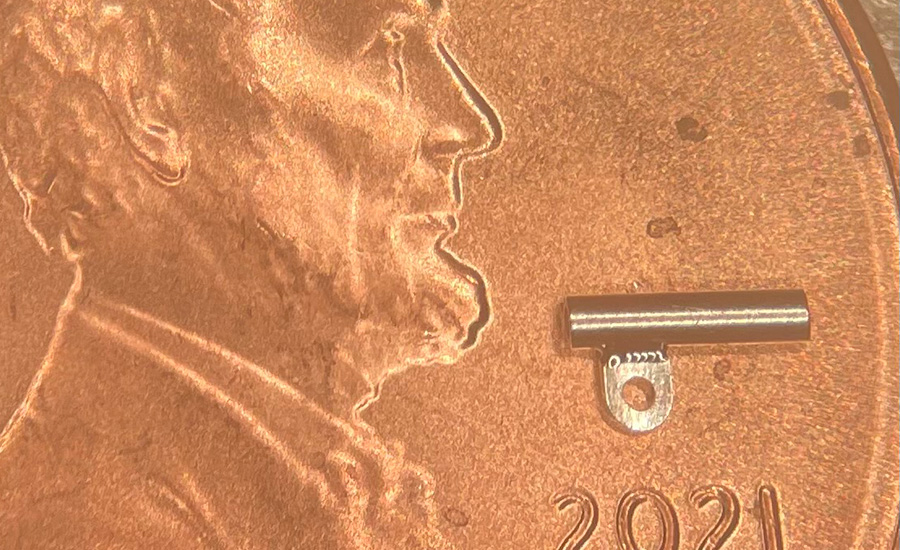Continuous innovation increases the need for highly precise production equipment, which is why many large and small firms seek methods to enhance the production of precision parts. This leads to why manufacturers shift to using laser welding, since it is one of the most accurate techniques for producing precision parts.
Laser welding could handle a wide range of technical challenges, particularly those involving components that are sensitive to high heat input, prone to deformation, or need exceedingly accurate welding. Moreover, various industries have used laser welding because it offers numerous benefits in producing metal products.
What is Laser Welding?
Laser welding is a method of joining thermoplastics, or metals, by utilizing a laser beam to generate a weld. Because laser welding is a focused form of energy, it can generate deep, narrow welds among square-edged pieces in thin materials and high welding rates of meters every minute in larger materials.
Moreover, laser welding is performed in two modes: the keyhole and conductivity-restricted welding. Also, the method wherein the laser beam interacts with the material being welded is determined by the beam’s power density when it strikes the material.
How Does Laser Welding Work?
Laser welding connects two pieces of metal by melting the metals using a high form of energy. This applies to heating energy produced by the concentrated light emitted by a laser welder, an electrical emitted by arc welders, and an oxyacetylene burner.
Furthermore, light energy may not appear as intense as an electric arc or torch heat. However, it is the focus of this light energy that provides all of its power.
The Benefits Of Laser Welding In The Manufacturing Of Precision Parts
There are several reasons why laser welding is more helpful to companies than other welding procedures, and it is widely accepted around the world. Moreover, laser welding is more cost-effective for industrial enterprises because of better production rates and other advantages.
Flexibility and Speed
Laser welding is a quick procedure. Thin section components may be welded at several meters per minute, based on the kind and intensity of the laser employed. As a result, lasers are ideal for use in greater quality automated systems.
Efficiency benefits may also be obtained for thicker sections since the laser keyhole welding method can finish a junction in a single process that would typically take numerous approaches using conventional methods.
Great Precision
Excellent accuracy and precision are characteristics of laser welding for manufacturing. With this level of integration, they can fuse the tiniest of pieces without inflicting any harm, as well as steel constructions of up to 25mm thick.
Narrow, Deep Welds
Laser welding enables high aspect ratio welding, resulting in a viable option for joint configurations incompatible with many conventional welding processes, including stake welding via lap joints. When contrasted to components created with resistance spot welding, this enables the use of smaller flanges.
Low Heat Input
Lasers provide a highly focused heating element that may be used to create a keyhole. As a result of producing a tiny quantity of welded metal and transmitting just a small amount of heat into the material surface, laser welding generates samples that deform less than those welded with other procedures.
An additional benefit of the low heat input is the short width of the heat-affected zones on each side of the weld, which results in reduced thermal degradation and property loss in the parent material close to the weld.
Consistent Results
Companies benefit from laser welding’s adaptability and quickness. Expenses are reduced as a result of lesser costs of the increased productivity levels. Stability is essential in production because it provides product repetition, a beneficial process used to create.
Adaptable To A Variety Of Thicknesses And Materials
By using non-metallic and metallic lasers, numerous raw items may be connected or welded. Furthermore, based on the kind and intensity of the laser employed, the thickness of the material which can be welded for steels may range from less than a millimeter to about 30mm.
Versatility
Aside from welding, a laser source may be utilized for several other materials method applications, including marking, heat treatment, surface, and cutting, as well as more advanced methods such as prototyping, with a few tweaks. Furthermore, there are numerous approaches to how the beams are supplied to the workpieces.
Take Away
There are several advantages to employing laser welding in producing precision parts. When using these methods, laser welding provides higher dependability and accuracy. Moreover, even though the slightest miscalculation may lead to tragedy, companies may still benefit from having this level of precision and reliability in the method itself. Furthermore, the laser beam has a quick turnaround, despite extremely high standards. The accuracy of the equipment does not slow down the production of the components.

